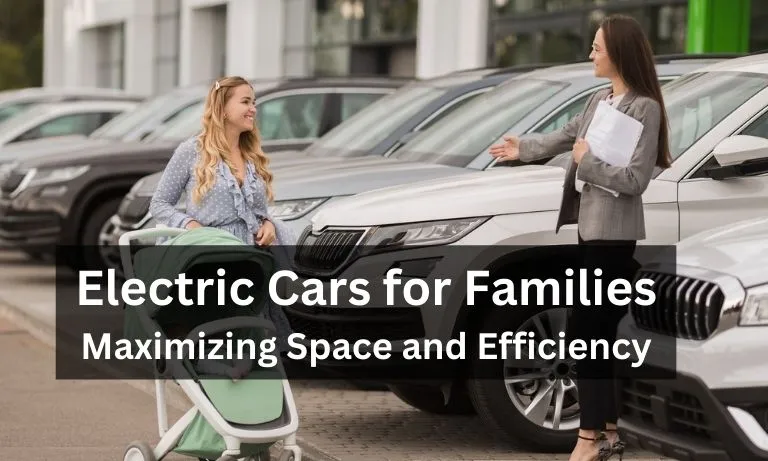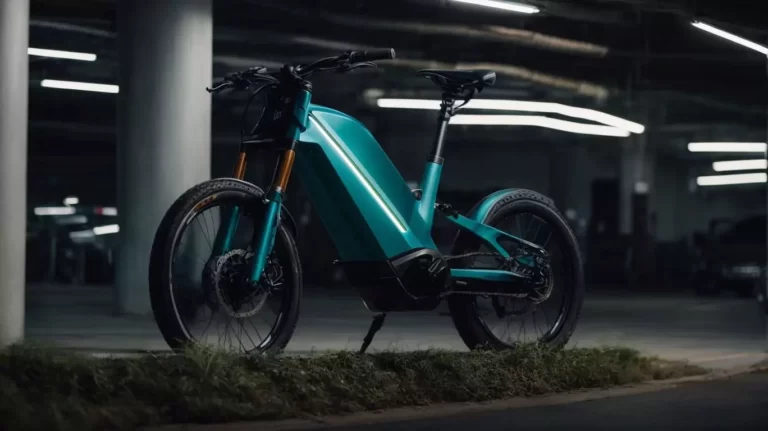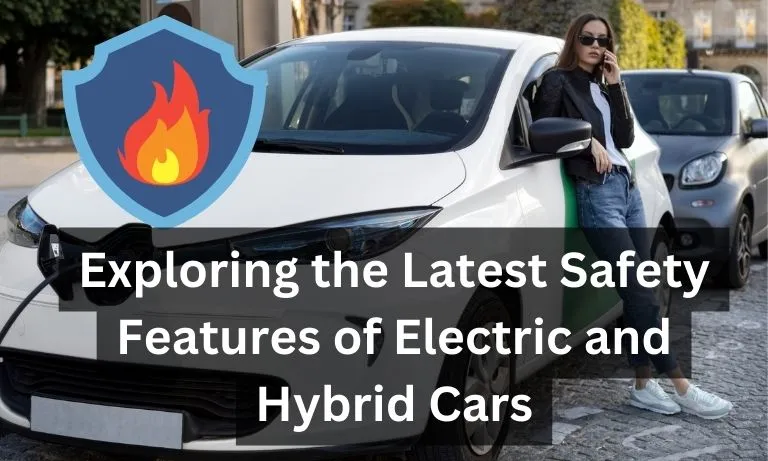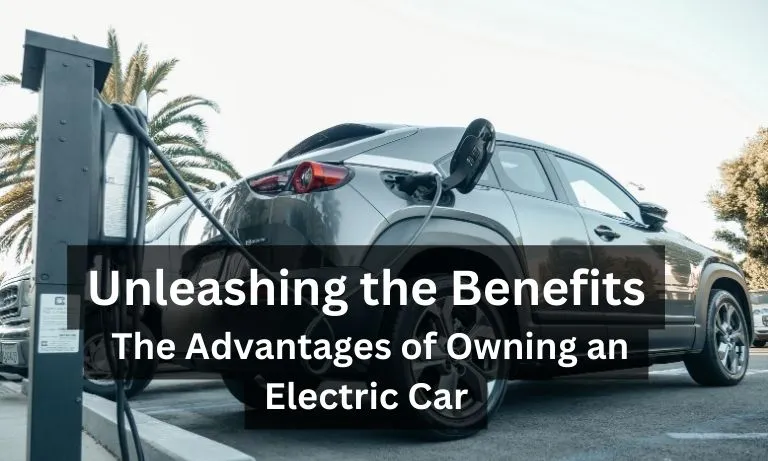Are Hybrid Cars More Expensive to Maintain? Cost Analysis and Tips
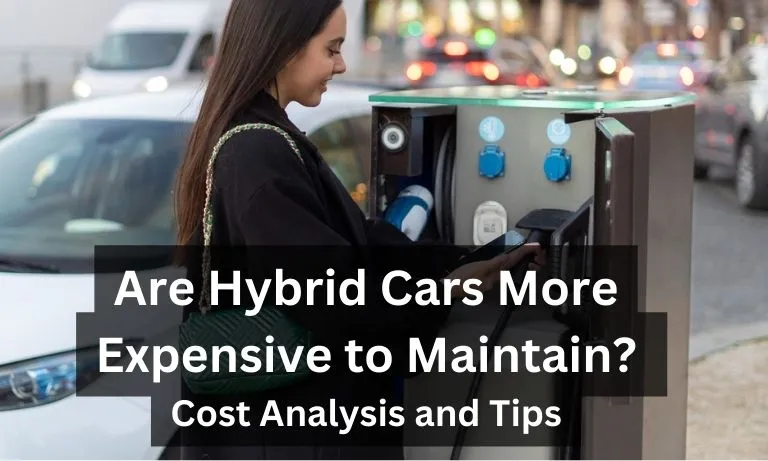
Are you considering buying a hybrid car but worried about the potential costs of maintenance? As our concern for the environment grows, more and more people are turning to hybrid vehicles.
Hybrid cars have surged in popularity in recent years, capturing the hearts of eco-conscious drivers with their impressive fuel efficiency and reduced emissions. But as with any car, the question of maintenance costs inevitably arises. Are hybrid cars more expensive to maintain than their gasoline-powered counterparts?
Let’s delve into the world of hybrid car maintenance, offering a clear cost analysis and valuable tips to keep your hybrid running smoothly and your wallet happy.
So, buckle up and get ready to unlock the secrets of keeping your hybrid happy and your wallet healthy!
What Are Hybrid Cars?
Hybrid cars are vehicles that combine the use of an internal combustion engine with an electric motor in order to improve fuel efficiency and reduce emissions compared to traditional gasoline-powered cars. These cars utilize regenerative braking to recharge the battery while slowing down or stopping, which helps to maximize fuel economy.
The electric motor in a hybrid car assists the engine during acceleration, reducing the workload on the engine and improving overall performance. Some hybrid cars are also capable of running solely on electric power for short distances, further reducing fuel consumption and emissions.
While hybrid cars may have a higher initial cost due to their advanced technology and components, they can save money in the long run through fuel savings.
It is important to note that hybrid cars may require specialized maintenance and service due to the presence of both an engine and an electric motor. It is recommended to follow the manufacturer’s guidelines for proper maintenance and servicing of hybrid cars.
How Do Hybrid Cars Work?
Hybrid cars operate using both an internal combustion engine and an electric motor. Here is a step-by-step breakdown of how hybrid cars work:
- The engine and motor work together to power the vehicle.
- During acceleration, the electric motor provides additional power to the engine, reducing fuel consumption.
- When the car is idle or traveling at low speeds, the engine shuts off, and the electric motor takes over.
- The electric motor charges the battery through regenerative braking, converting kinetic energy into electrical energy.
- The battery stores this energy for later use, powering the electric motor during low-speed driving or when the engine is off.
- The engine charges the battery when needed, ensuring a constant power supply.
Fun fact: Hybrid cars can achieve higher fuel efficiency and emit fewer emissions compared to traditional gasoline-powered vehicles. Additionally, they utilize advanced technologies like regenerative braking to maximize energy efficiency.
What Are the Benefits of Hybrid Cars?
Hybrid cars have become increasingly popular in recent years, as people become more conscious of their environmental impact and the rising cost of fuel. In this section, we will discuss the benefits of owning a hybrid car. From better fuel efficiency to lower emissions, hybrid cars offer numerous advantages over traditional gasoline vehicles. We will also touch on the potential tax incentives that come with owning a hybrid car. So, let’s dive into the benefits of choosing a hybrid car for your next vehicle.
1. Better Fuel Efficiency
Hybrid cars offer numerous benefits, including improved fuel efficiency. Here are some steps to maximize fuel efficiency in hybrid cars:
- Drive smoothly: Avoid sudden acceleration or braking, as this can waste fuel. Instead, maintain a steady speed.
- Utilize regenerative braking: Take advantage of the regenerative braking feature, which converts kinetic energy into electrical energy to recharge the battery.
- Monitor tire pressure: Keep your tires properly inflated to reduce rolling resistance, improving fuel efficiency.
- Avoid excessive idling: When waiting, turn off the engine to save fuel. Hybrid cars can often run on electric power alone at low speeds or in stop-and-go traffic.
- Plan your trips: Combine errands into one trip, minimizing the distance traveled and reducing fuel consumption.
In 1901, Ferdinand Porsche created the first hybrid car, the Lohner-Porsche Mixte. This vehicle utilized electric motors in the wheel hubs to assist the gasoline engine, achieving improved fuel efficiency. Today, hybrid cars continue to evolve, offering even greater fuel efficiency and reduced emissions, contributing to a greener and more sustainable future.
2. Lower Emissions
One of the key benefits of hybrid cars is their ability to produce lower emissions, resulting in a cleaner and healthier environment. Here are the steps that hybrid cars take to achieve this:
- Electric Motor: Hybrid cars are equipped with an electric motor that works alongside the internal combustion engine. The electric motor can power the vehicle on its own at low speeds or assist the engine during acceleration, reducing the amount of fuel burned and emissions produced.
- Regenerative Braking: Hybrid cars use regenerative braking technology to capture and convert some of the energy lost during braking into electricity. This electricity is then stored in the battery and used to power the electric motor, decreasing the reliance on the engine and lowering emissions.
- Start-Stop Feature: Many hybrid cars have a start-stop feature that automatically shuts off the engine when the vehicle is stationary, such as at a red light. This eliminates unnecessary idling, reducing emissions and fuel consumption.
Fact: Hybrid cars can reduce carbon dioxide emissions by up to 30% compared to conventional gasoline-powered vehicles.
3. Tax Incentives
Tax incentives are one of the many benefits of owning a hybrid car. These incentives are offered by governments to encourage the purchase and use of environmentally friendly vehicles. Here are some steps to take advantage of these tax incentives:
- Research: Find out what tax incentives are available in your area. Different regions may offer different incentives, such as tax credits, deductions, or exemptions.
- Eligibility: Make sure your hybrid car meets the requirements for the tax incentives. This may include factors like the vehicle’s fuel efficiency, emissions levels, or battery capacity.
- Claiming: Follow the necessary procedures to claim the tax incentives. This may involve submitting specific forms or documentation to the appropriate government agency.
- Keep Records: Maintain accurate records of your hybrid car’s purchase, registration, and maintenance. These documents may be required when claiming the tax incentives.
- Consult Professionals: If you are unsure about the tax incentives or need assistance with the process, seek advice from tax professionals or experts who specialize in hybrid car incentives.
By taking advantage of the tax incentives, owners of hybrid cars can not only enjoy the environmental benefits but also save money in the long run.
What Are the Costs of Owning a Hybrid Car?
Hybrid cars have become increasingly popular in recent years due to their fuel efficiency and reduced emissions. However, many people have concerns about the potential costs associated with owning a hybrid car. In this section, we will explore the various costs that come with owning a hybrid vehicle. From the higher upfront cost to the maintenance and battery replacement expenses, we will break down the true cost of owning a hybrid car.
1. Higher Upfront Cost
When considering purchasing a hybrid car, it’s important to be aware of the higher upfront cost compared to traditional gasoline-powered vehicles. However, this higher upfront cost can be offset by the long-term benefits of owning a hybrid car, such as better fuel efficiency and lower emissions. To help mitigate the impact of the higher upfront cost, follow these steps:
- Research and compare different hybrid car models to find one that fits your budget and needs.
- Consider buying a used hybrid car, as they tend to have a lower upfront cost compared to brand new models.
- Take advantage of available incentives and rebates offered by federal, state, and local governments to help reduce the upfront cost of purchasing a hybrid car.
- Explore financing options such as low-interest loans or lease programs that can help make the higher upfront cost more manageable.
- Calculate potential long-term savings in fuel costs and maintenance expenses, considering the higher upfront cost, to determine if a hybrid car is a cost-effective choice for you.
By following these steps, you can make an informed decision and potentially save money on the higher upfront cost of owning a hybrid car.
2. Maintenance Costs
Maintaining a hybrid car is crucial to ensure its longevity and optimal performance. Here are some key steps to consider when managing maintenance costs:
- Regular maintenance: Follow the manufacturer’s recommended maintenance schedule, including oil changes, tire rotations, and filter replacements.
- Battery warranty: Understand the warranty details for the hybrid battery. If any issues arise within the warranty period, it can significantly reduce replacement costs.
- DIY Maintenance: Some maintenance tasks, like replacing air filters or windshield wipers, can easily be done by yourself, saving on labor costs.
To effectively manage maintenance costs for your hybrid car, it is important to stay on top of regular maintenance, utilize the battery warranty to minimize replacement costs, and take on simple maintenance tasks yourself to avoid labor expenses. By following these steps and suggestions, you can ensure the longevity and optimal performance of your hybrid car.
3. Battery Replacement Cost
The cost of replacing a battery is a crucial factor to consider when owning a hybrid car. To better understand and manage this cost, here are some steps you can take:
- Research the lifespan of the battery: On average, hybrid car batteries last between 8 to 10 years or 100,000 to 150,000 miles. Knowing this information can help you plan for potential replacement costs.
- Check the warranty coverage: Most hybrid car manufacturers offer warranties for their batteries. It’s important to understand the terms and conditions of the warranty, including the coverage period and any associated costs.
- Consider aftermarket options: Instead of purchasing a brand new battery from the manufacturer, you may want to explore aftermarket options. These batteries are often less expensive and can be a cost-effective alternative.
- Explore refurbished batteries: Another budget-friendly option is to consider refurbished batteries. These batteries have been restored to working condition and can provide reliable performance at a lower cost.
- Follow proper maintenance: Proper maintenance of your hybrid car can help extend the lifespan of the battery. Be sure to regularly check and replace worn-out components, maintain the correct coolant levels, and follow the manufacturer’s recommended maintenance schedule.
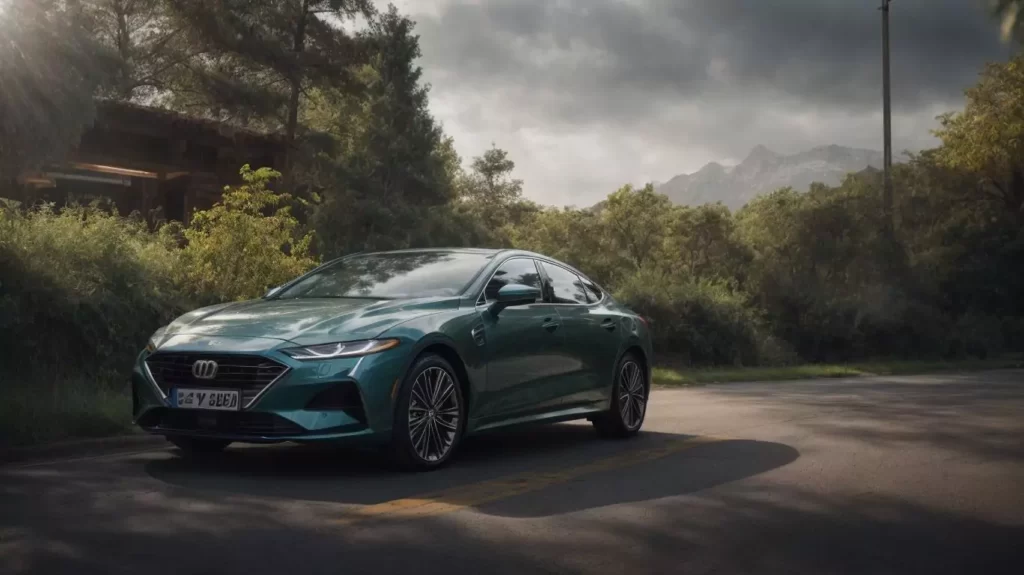
Do Hybrid Cars Cost More to Maintain?
With the increasing popularity of hybrid cars, many potential buyers may wonder if these eco-friendly vehicles come with a higher maintenance cost. In this section, we will address this common concern and explore the potential differences in maintenance costs between hybrid and traditional gasoline cars. Additionally, we will specifically discuss the cost of replacing the hybrid battery, which is often a major factor in maintenance expenses.
1. Maintenance Costs
Maintenance costs are an important consideration when owning a hybrid car. However, there are steps you can take to save money on maintenance:
- Regular maintenance: Follow the manufacturer’s recommended maintenance schedule to keep your hybrid car in top condition and prevent costly repairs.
- Battery warranty: Check if your hybrid car’s battery is covered under warranty. If it is, you may be able to get a replacement at no cost or a reduced price if it fails within the warranty period.
- DIY maintenance: Learn basic maintenance tasks like changing the air filter, checking the tire pressure, and changing the oil. Performing these tasks yourself can save you money on labor costs.
In 2018, a study conducted by Consumer Reports found that hybrid cars had lower maintenance costs compared to traditional gasoline-powered cars. The study showed that hybrid cars required fewer repairs and had lower average repair costs. This is due to the fact that hybrid cars have less wear and tear on their engines and brakes, resulting in fewer breakdowns and less frequent replacements of costly components.
2. Battery Replacement Cost
The cost of replacing the battery in a hybrid car is an important factor to consider. As a crucial component of the hybrid system, the battery will eventually need to be replaced. The exact cost of replacement can vary depending on the car’s make and model, as well as the type of battery used.
On average, the cost of replacing a hybrid car battery can range from $1,000 to $6,000. Other factors such as the car’s brand and the battery’s warranty coverage can also impact the cost. Some manufacturers offer warranties for their hybrid batteries, which can help reduce the expense of replacement.
To save money on battery replacement cost, it is crucial to maintain the battery properly and follow the manufacturer’s guidelines for usage and charging. Regular maintenance, such as keeping the battery clean and checking for any signs of wear or damage, can also help prolong the battery’s lifespan.
How Can You Save Money on Hybrid Car Maintenance?
While hybrid cars are known for their fuel efficiency and eco-friendliness, one major concern for potential buyers is the cost of maintenance. However, with the right approach, you can actually save money on hybrid car maintenance.
In this section, we will discuss different ways to keep your hybrid car running smoothly without breaking the bank. From scheduling regular maintenance to taking advantage of battery warranties and even learning how to do some maintenance tasks yourself, there are plenty of ways to cut down on the cost of maintaining a hybrid car.
1. Finding a Qualified Mechanic: Expertise Matters
Not all mechanics are created equal. When it comes to hybrid cars, finding a technician who is familiar with servicing hybrid powertrains is essential. Look for mechanics certified to work on hybrid vehicles. These mechanics possess the specialized knowledge and tools required to diagnose and service your hybrid correctly, potentially saving you time and money in the long run.
2. Regular Maintenance
Regular maintenance is crucial for keeping hybrid cars running efficiently and avoiding costly repairs. Here are some steps to follow for regular maintenance:
- Check the owner’s manual: Familiarize yourself with the manufacturer’s recommended maintenance schedule for your specific hybrid model.
- Oil changes: Follow the recommended oil change intervals and use the type of oil specified by the manufacturer.
- Inspect and replace filters: Regularly inspect and replace the engine air filter, cabin air filter, and fuel filter as recommended by the manufacturer.
- Tire maintenance: Check tire pressure regularly and rotate the tires according to the manufacturer’s guidelines to promote even wear.
- Battery inspection: Monitor the hybrid battery regularly for any signs of damage or deterioration.
- Brake maintenance: Keep an eye on brake pad wear and replace them when necessary to ensure optimal braking performance.
- Fluid checks: Regularly check and top up fluid levels, including coolant, transmission fluid, and brake fluid.
- Diagnostic scans: Schedule periodic diagnostic scans to identify any potential issues with the hybrid system and address them promptly.
3. Battery Warranty
Hybrid cars come with a warranty for their battery, providing coverage for the hybrid battery pack. The duration and terms of this warranty may vary between manufacturers, typically lasting 8 to 10 years or until a specific mileage limit, such as 100,000 miles, is reached.
This warranty ensures that if the battery fails within the specified period, the manufacturer will cover the cost of repair or replacement. Having a battery warranty brings peace of mind to hybrid car owners, as the battery is often the most expensive component.
It protects against potential high repair costs and offers financial security. In addition, the battery warranty also incentivizes manufacturers to ensure the durability and reliability of their hybrid batteries.
To make the most of the battery warranty, it is recommended to adhere to regular maintenance schedules and keep records of all maintenance activities. This will be helpful in case any warranty claims need to be made. It is also advisable to understand the specific terms and conditions of the battery warranty to know what is covered and what is not.
Overall, the battery warranty adds value to hybrid cars by providing a safety net and potential cost savings for battery-related issues. Consider these suggestions to maximize the benefits of the battery warranty:
- Follow the manufacturer’s recommended maintenance schedule to keep the battery in good condition.
- Keep records of all maintenance and repairs to support any warranty claims.
- Research and understand the details of the battery warranty to know your rights and coverage.
4. Preventative Maintenance Tips
DIY maintenance for hybrid cars can help reduce costs and keep your vehicle running smoothly. Here are some steps to follow:
- Regular maintenance: Perform routine tasks such as checking and replacing fluids (oil, coolant), cleaning or replacing the air filter, rotating the tires, and inspecting the brake pads.
- Battery maintenance: Keep the hybrid battery in good condition by maintaining the appropriate charge level. Avoid deep discharges and extreme temperatures.
- DIY inspections: Regularly inspect the vehicle for any signs of wear or damage. Check the belts, hoses, and suspension components for any issues that may require professional attention.
- Embrace a Gentle Touch: Avoid harsh acceleration and sudden braking whenever possible. Hybrids are designed for efficiency, and a smoother driving style can help conserve battery life and reduce wear on the braking system.
- Prioritize Proper Tire Care: Regularly check your tire pressure and inflate them to the recommended level as specified in your owner’s manual. Unevenly inflated tires can not only affect fuel efficiency but also lead to premature tire wear, increasing replacement costs. Learn more about hybrid car tires.
- Learn basic repairs: Acquire knowledge of basic repairs such as replacing wiper blades, light bulbs, or cabin air filters. This can save money on labor costs.
- Follow the manufacturer’s recommendations: Consult your owner’s manual for the manufacturer’s recommended service schedule. This schedule outlines the recommended intervals for oil changes, filter replacements, and other routine maintenance tasks. Sticking to this schedule helps ensure your hybrid receives the care it needs to function optimally.
By taking these steps, you can save money on hybrid car maintenance and keep your vehicle in optimal condition.
Conclusion: Hybrid Maintenance Mystery Solved!
Hybrid cars have emerged as a compelling choice for eco-conscious drivers seeking a balance between fuel efficiency and environmental responsibility.
While the initial cost might be higher compared to gasoline vehicles, hybrids can offer significant long-term savings through fuel efficiency and potentially lower maintenance expenses.
We’ve debunked the myth that hybrids are inherently more expensive to maintain.
By following the tips and strategies outlined throughout this article, you can effectively manage your hybrid’s maintenance needs and keep your wallet happy:
- Understanding Warranty Coverage: Familiarize yourself with your hybrid’s warranty, particularly the battery coverage. This knowledge empowers you to identify what’s covered and for how long, potentially saving you a significant amount if a covered component fails.
- Finding a Qualified Mechanic: Seek out a mechanic with expertise in servicing hybrid powertrains. Their specialized knowledge and tools can ensure accurate diagnosis and repairs, potentially saving you time and money in the long run.
- Preventative Maintenance is Key: Regularly maintaining your hybrid car is crucial for its longevity and optimal performance. Follow the manufacturer’s recommended service schedule, prioritize proper tire care, and adopt a gentle driving style to minimize wear and tear.
By embracing these practices, you can experience the many benefits of hybrid ownership with confidence, knowing you’re making a smart choice for both your wallet and the environment.
So, if you’re considering a hybrid car, don’t let maintenance concerns hold you back. With the right knowledge and approach, you can enjoy a smooth, eco-friendly driving experience for years to come.
FAQ
Do hybrid cars need maintenance?
Yes, hybrid cars require regular maintenance, similar to gasoline cars. However, the electric motor can reduce wear and tear on the gasoline engine, potentially leading to less frequent servicing in some areas.
How often do you need to service a hybrid car?
Consult your car’s owner’s manual for the recommended service intervals. These intervals are typically similar to gasoline cars, but a qualified mechanic can advise you based on your specific driving habits.
Are hybrids expensive to fix?
Routine maintenance costs for hybrids are generally comparable to gasoline cars. Battery replacement can be expensive, but it typically occurs after many years of ownership.
Are hybrids high maintenance?
No, hybrids are not inherently high maintenance. While they have a unique powertrain, proper care and qualified servicing can keep maintenance costs manageable.
Is it hard to maintain a hybrid car?
No, maintaining a hybrid car isn’t inherently difficult. Follow the recommended service intervals and find a qualified mechanic familiar with hybrid technology.
How much to replace a hybrid battery?
The cost of a hybrid battery replacement can vary depending on the make and model, but it typically ranges from $2,000 to $5,000.
What kills a hybrid battery?
Extreme temperatures, frequent fast charging (for PHEVs), and age can all contribute to battery degradation.
Do hybrid cars break faster?
No, hybrids aren’t inherently more prone to breakdowns than gasoline cars. Following proper maintenance is crucial for any vehicle.
Can you still drive a hybrid without the battery?
Yes, the gasoline engine will take over if the battery depletes, allowing you to continue driving. However, fuel efficiency will be lower.
Why do people avoid hybrid cars?
Some might be concerned about the upfront cost, battery replacement expenses, or range limitations (PHEVs).
Is idling bad for hybrid cars?
Idling isn’t necessarily detrimental to a hybrid battery, but it reduces efficiency. If you’ll be stopped for extended periods, consider turning off the engine if safe to do so.
Do hybrid engines wear out faster?
Not necessarily. The electric motor can reduce wear and tear on the gasoline engine in hybrids.


